By Siva Kumar G
‘At 30,000 feet nothing moves but we are on the ground.’ This is how the number main the captain’s seat of the Northern Corridor perceives action rather high-flying talk.’
- Datuk Redza Rafiq Abdul Razak
CEO of Northern Corridor Implementation Authority
Datuk Redza Rafiq Abdul Razak, the Chief Executive Officer of North Corridor Implementation Authority (NCIA) is no dreamer but a hard core realist with radical approaches to kick start and promote economic propulsion in a manner where the benefits are realised and enjoyed by those in his catchment area – Penang, Perak, Kedah and Perlis.
Malaysian Corridor had the opportunity to sit down with Redza and hear things from his point of view in a point blank manner. Redza was quick to use catch words like “regional enabler” and highlighted the “change in the approach” adopted by NCER.
In 2008 and 2009 Redza says the total figure given was RM1.48 billion. In 2010, he changed NCIA’s approach as previously they were doing infrastructure work and getting involved in the construction of roads, drains, bridges and so on.
“That’s not our job. That’s the job of the JKR and JPS. It only created complications. Our task now is how do we catalyse private sector participation and ensure that the private sector can thrive and prosper in this economic corridor and how we can manage the spillovers and that is to ensure optimal benefits?”
Redza prefers not to take the approach of being big planners. “We base our work on the reality on the ground for example the Sungai Kerang project and have started export in to Dubai and Saudi Arabia. These are on-going. Even for the bee hive venture, their factory will be ready in July. And as a regional implementation authority, we don’t get involved in say 30 acres in Bukit Dumbar for example. This is why you see our aquaculture which is so big.”
This is what Redza and NCIA are all about. The NCER has chalked up RM 9.3 billion through the total private sector participation alone over the past 16 months with RM3.3 billion bagged in the first four months of this year alone. Such is the record set by the NCER under the stewardship of its Redza. Since its inception, the NCIA has created nearly eight thousand work positions and led by the NCIA, private sector participation has outreached RM6 billion of which only 8.99 percent of it had constituted governmental input.
ACHIEVING THE OUTREACH
He centres his ideas on how best to optimise the economic benefits from these high value activities. If Redza pursues a portfolio approach to economic development he feels there will always be low hanging fruits which are of high yield. In the case of the Northern Corridor, Redza feels that a typical example of that is E&E sector (electrical and electronic) which can continue to achieve high economic status and attain the goals set in the New Economic Model.
“But we cannot use this as a portfolio approach to achieve economic development at the expense of other things because our agricultural sector provides the biggest outreach.
“On the one hand we have the biggest multiplier (E&E) sector and on the other hand the biggest outreach (agriculture).
Citing the Flora Bee Hive Enterprise, Redza find it’s a simple process in which the company promotes the use of bio-technology to get the bees to produce royal jelly.
“Royal jelly which is a higher end product (a small bottle can fetch up to RM100 plus and they are all mainly for export globally) when compared to honey is a product of a scientific process but the actual bee farming is just bee farming plain and simple where they don’t produce hone but royal jelly.
“If the ‘so what’ of this comes about, we are actually able to create business opportunities and from there we manage the spillovers and the downstream activities like the manufacturing of the boxes for the bees.
“The people at Flora Bee Hive do not sell a system like many other ventures like worms, leeches and so on. Their approach is that if you can find someone who can produce the boxes more economically than us, please go ahead. All they want is the royal jelly and this creates a lot of spillovers.”
Being quite passionate about how each venture provides the much felt outreach, Redza was quick to distance himself from infrastructure projects citing their one and only Penang Sentral project which is under construction is Penang Sentral The rest of their activities does not involve construction.
How the NCIA ensures local participation is that they engage with the local leaders who will them provide the funnel in terms of the candidates “because they are the ones who know the best.’
“We want best outcome based on the ground results and they (the leaders) have the best on-the-ground experience. This was successfully done in Tasek Glugor and Kamunting.
“We didn’t know the participants but the local leaders help us in managing the funnel.”
Confining his illustration and approach to the context of the bee hive farmers, the question of how NCIA prepares the participants came about.
“We give them training and the funding. It is not funded nor is it guaranteed by the government. It is done by the private sector and NCIA job is to catalyse the private sector to enable them to function that way. We don’t get involved with taxation and all that but we go one level down and these people get the loans and if they can’t repay the loan, the company will take back the businesses to repay the loans”
The motivation factor in doing this is the carrot at the end of the stick. With just two hours of work each day, a bee farmer can earn RM800 per month. So this can get bigger and bigger with greater involvement by the bee farmers.
The best part of this outreach programme is the anchor company (Flora Bee Hive) which buys the royal jelly produced by the farmers. This is opposed to having a retailer at the other end and the problem of branding, labeling and packaging will set in complicating matters. The anchor company serves as an industrial provider.
Reza encased local investment in the Northern Corridor to be 50.6 per cent of the 6 billion investments and the remaining being foreign and the bulk of the investment comes from the manufacturing sector. The Led player for example contributed 2.1 billion.
“That is why you cannot take the portfolio approach when reflecting on investment against companies and so on. You have to look at the yield factors and the outreach because whatever economic benefits that you want to get out of this, have to appeal to the masses who must be able to reap the benefits from such economic endeavours. This will answer the critics who would be tempted to ask ‘so what?’
“The two examples alone reflect RM2.6 billion and this is only two. The half a billion comes from Singapore-based aerospace company Aviatron.”
The NCIA, Redza says, works very hard at this especially in getting what is just below the surface which is RM40 million worth of contracts being farmed out to companies by a company like Aviatron but somehow this doesn’t get picked up. These are the real spillovers, says Redza.
What attracted Aviatron to the Northern Corridor is a 40-year evolution in manufacturing which started from the semi-conductor industry which provided a fixed set of baseline skills. These base line skills are important as the culture of delivering precision products and services was found in this region especially in Penang.
This had since become quite attractive to the companies and NCIA ‘s challenge was not so much in attracting them but the track record which the region has and these companies could literally come and see for themselves what is being done.
“It’s more show of capability to the NCIA. Redza feels that the challenge was more on how to carve out the RM40 million in spin-offs. It is different from Redza’s previous involvement in Cyberjaya which he described as a green field. Penang, he said, is a brown field and this remains NCIA’s strong selling points towards being able to deliver precision products for the past 40 years.
Redza does not deny that there had been failures in the past. He cited an example of a case of having two manufacturing lines which are super efficient.
CENTRES OF EXCELLENCE
“When they put in three of four lines, they can’t do it. What changed them from being super where the yield was 99.97 percent. The investors were impressed and went for five lines but the yield dropped to 95 per cent. Why does this happen. “
To cope with this problem NCIA has centres of excellence (COEs). Redza feels that some local companies do not have a structural discipline.
“They have the capabilities but do not have the structural discipline and this where the centres of excellence (COEs) will help them foster the spirit of COEs to move in tandem with the engagement.
“What helps us is that the work culture is already there to attract like-minded individuals and similar companies to help them get back on track.”
Redza says that the 40 years of evolution has created a culture of business found to most palatable to these companies especially with a history of delivering precision products for the past 40 years.
“They have all these segments of the supply chain that are done by the companies and with RM40 up for grabs this is not a bad thing. This serves to only strengthen and augment the state of being in the aerospace ecosystem in the Northern Corridor.”
This is something different, he quips.
Perhaps this is why things are done differently in the north with Redza at the wheels. He is very much down-to-earth.
“We are not the ones to announce big multi-million ringgit buildings to be built and so on.”
Redza was also quickly to divert the attention to another area of concern which is human capital development in trying to keep pace with economic development.
Penang hospitals for example, he says are choosy.
“The growth in the health industry sector is huge and is creating job opportunities for nurses and doctors so much so that the private institutions of higher learning are under pressure to revise the syllabus and increase their standards of qualification and meet the stringent guidelines set by the hospitals. These institutions of learning have to meet the stringent criteria set by the hospitals.”
The NCIA has also touched the hearts of paddy farmers with a scheme that became a sigh of relief and assign of higher yields in their crops.
This was the case in the area of fertiliser storage (setor baja) with their trays and the transplanters. NCIA designed this to get rid of the problem of empty husk paddy (padi angin).
Redza came to realise that the empty husked padi was being discarded and with the proper storage and dissemination of fertlilisers the farmers enjoyed a 10 per cent increase in their yield.
Directly or indirectly a simple move of efficiency benefitted 20,818 farmers because they could now access their fertilisers from a safe place and use it and use it when and where they want it without the fear of it getting wet or stolen as was the case in the past where they had to rush to use it which at one time resulted in poor quality paddy with a high incidence of empty husk
With the new storage scheme, the farmers recorded a 10.1 per cent increase in their income because of such a facility thought out by the NCIA.
Touching on tourism, Redza cited three main areas being eco-tourism, heritage and cultural tourism and the niche market tourism such as healthcare travel.
Redza hinted at Langkawi and Belum as tourism products being re-positioned somewhat and this plan is still in its concept stage.
“We just finished the first round of the Langkawi lab in which we are looking at how we are going to re-position. Why we didn’t report on this is that it sounds like we are going to re-position but looking to reposition are not repositioning yet. This is also the case for the Belum tropical rainforest and a study is still being carried out.
On cultural heritage tourism Redza was equally passionate about historical and traditional folklore that got lost as Langkawi developed into a tourist haven. This has never been propagated well and the story remains untold, say Redza who feels strongly that there are many tales of Langkawi which are priceless and can be marketed to tourists.
Redza has put on his thinking cap with this bit.
As for Penang, he says it is still the place where the hospitals are situated but ironically all the supporting industries are on the mainland. The producers of human capital are on the mainland. One of the key providers is in Seberang Jaya (Masterskill Nursing College) and another in Kedah (AIMST University).
“I don’t see Penang as the sole beneficiary of the healthcare travel and tourism. We are riding on the fact that Penang is just one of the two hot areas as far as health care tourism is concerned, the other one being in Malacca (Manipal Medical University).
CHALLENGES
Redza’s first challenge was to set the engagement direction in the right mode and manner and so he changed the overall approach.
The biggest challenge for Redza was to steer the NCER into what they are now doing and this involved a lot of maneuvering on his part as the captain of the ship and true to his grit and sheer good judgement battles are won and spirits remain high as the figures speak for themselves especially when the NCIA organised the Norther Corridor Bussiness Showcase in KL Sentral recently.
“Those some will say there is a political overtone, it is not the case. The economic corridors are designed in such a way that all the states are represented. There are no political interferences.
“In our case we work with MIDA. We do not have our own tax incentives as our engagement is different. We are the regional enabler and we work with Pemandu in a collaborative engagement and we basically work with our friends.
“We also liaise direct with factories like MDV for example which has never been done before. We come up with new innovative models like the Floral Bee Hive where have the private sector guaranteeing the loans which before this, we normally hear of only the government doing that.
“The unique nature of this is not just about the royal jelly, honey or whatever but the model that we use to extract value out of this. This is private sector land and in the 10MP, the private sector is supposed to drive economic growth. This is it.”
The US remains the single largest foreign investor nation in the Northern Corridor and the investments centre mostly in the E&E sector.
On his next biggest challenge, Redza says that if the Northern Corridor remains status quo, Malaysia will lose out to other countries.
“This is where we hope to institute programmes so that we can move up the value chain and continue to be competitive so that investors can continue to see the NCER as a viable business location and as a water tight value proposition for them.
“Take AMD as an example of this. They have a test facility now compare to assembling and IC packaging in the past. With the new test facility, it becomes a service and it is to improve the local content of our exports.
“This means that we have more value captured in the country and the jobs being offered for this are also highly paid jobs. They now hire technicians and engineers to conduct this testing. And this is where they enter into an agreement with us and are compelled to provide the training for our graduates allowing a transfer of technology. This is a way completes the value chain.”
Citing another example in QAV Redza says the company is not labour intensive but it creates 1,000 spillover jobs from companies supporting them. QAV on its own, he says, is not labour intensive. The definition of labour intensive jobs is now subjective.”
“In Redza’s previous engagement in Cyberjaya, there was a belief that with more computers there would be less manpower but it was proven otherwise as with the increase in computers the more people had to be engaged. It became human capital intensive. The test facility at ADM requires 700 people meaning 700 jobs which are high-tech jobs which are highly paid.”
The Northern Corridor speaks for itself. It is indeed a brown field in nature and they cannot compare themselves with other corridors as each corridor has its own value proposition and its own way of doing things.
The beautiful part of the corridor structure is that all the mentris besar and chief ministers are represented in the council and their state secretaries work closely with the NCIA to deliver the initiatives.
“There are no political issues. We have clear KPIs on what we are doing and what we are going to do. I really don’t believe in blowing the trumpet about what we are going to do. I would rather we get it done first. That is why we take a conscious effort to manage this secondary impact at the spillovers. That has to be managed. The challenge is how we carve out and manage all these value-add to remain in the country.
“You need to find the right activity which is practical and has high value in order to provide higher income levels to the masses. It is about what approach we use to harvest such high value like the Flora Bee Hive venture.”
Flora Bee Hive is an example of a value proposition for the regional roll out for the industrial production of royal jelly in Perak and Penang and Perlis and Kedah soon to follow suit. They have created 600 business opportunities along with 20 jobs in their Kamunting factory.
The NCIA is also being used vigorously by Pemandu and as their regional enabler for the EPPs (entry point projects) in the northern area, Redza also sits in the NKEA (national key economic areas) steering committee.
“This (NCER) is also a programme and we (NCIA) have to make sure that it is carried out. When you talk about transformation, are we not transforming?
“I am a strong believer of the EPPs as I am personally involved until its implementation. QAV is parked under an EPP and QT is part of a catalyst which forms another EPP called L Foundry. We are involved and we are strong believers of the NKEAs. These are not plans but programmes. You see, at 30,000 feet nothing moves but we are on the ground.
Ends.
BACKGROUNDER: The NCER as the regional development initiative encompasses the states of Kedah, Perak, Perlis and Penang in the north of Peninsular Malaysia and leverages on the advantages of the region by emphasising on formulations of growth in areas of agriculture, manufacturing, logistics and tourism which has become the primary focus of NCIA to ensure that social and sustainable development objectives are kept as priorities while stimulating economic growth.
Each company in the corridor is committed towards contributing to the development of the region and brings with them unique products, services and offerings that are unrivalled. The projected gross national income (GNI) from the region is expected to reach RM 13.03 billion and the NCIA is well on track to meet the goals of the region and that of the NKEAs that it supports. The growth of the GNI in the NCER is expected to play a key role in helping the nation realise its goal of achieving high income status by 2020.
The NCER is the only economic region in Malaysia that benefits from its forty years’ of inductrial and manufacturing evolution and its continuous success has contributed directly towards the availability of commercially viable land, sound infrastructure, an in-built business culture and an entrepreneurial mindset.
Official launch: Tan Sri Nor Mohamed Yakcop, Minister in Prime Minister’s Department, Economic Planning Unit (left) and Dato’ Mukhriz Mahathir, the Malaysian Deputy Minister of International Trade and Industry (second from left) officiating at the Northern Corridor Business Showcase. Looking on is Datuk Redza Rafiq Abdul Razak, the Chief Executive of the NCIA (centre behind Yakcop and Mukhriz).
Booth signage: Tan Sri Nor Mohamed Yakcop, Minister in Prime Minister’s Department, Economic Planning Unit (right) signing on one of the booths at the Northern Corridor Business Showcase. Looking on is Dato’ Mukhriz Mahathir, the Malaysian Deputy Minister of International Trade and Industry (second from right) and Datuk Redza Rafiq Abdul Razak, the Chief Executive of the NCIA (third from right).
Interview session: Siva Kumar, the Editorial Adviser to Corridor Development Corporation Berhad (right) and Zainal Epi, Editor of Malaysian Corridor Magazine (left) was interviewing Datuk Redza Rafiq Abdul Razak, the Chief Executive of the NCIA (middle) on the business showcase.
Ends.
Tuesday, July 12, 2011
Subscribe to:
Post Comments (Atom)
.jpg)
.jpg)

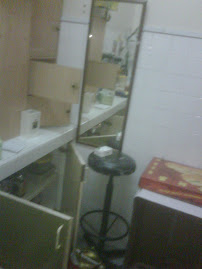
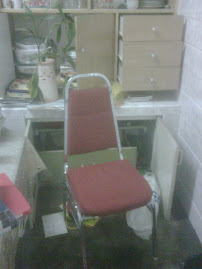

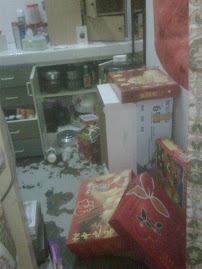
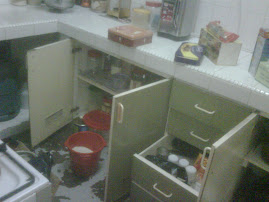
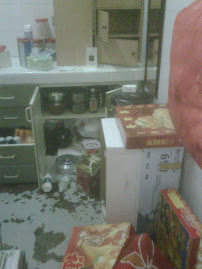
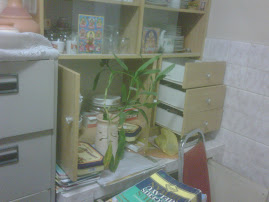
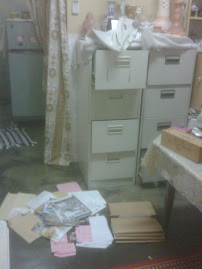
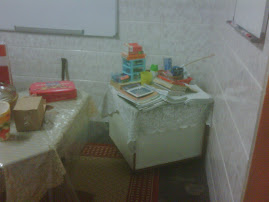
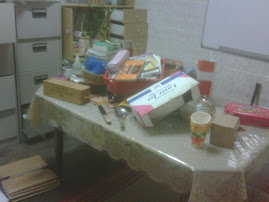
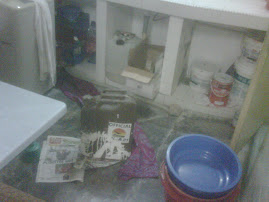
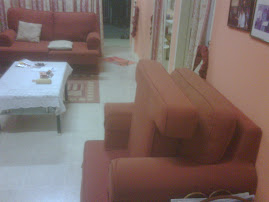
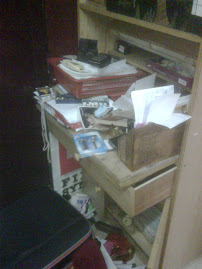
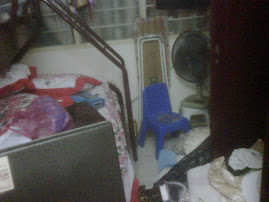
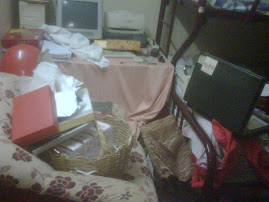
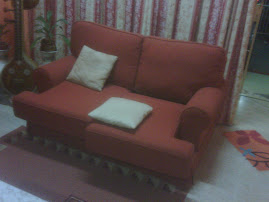
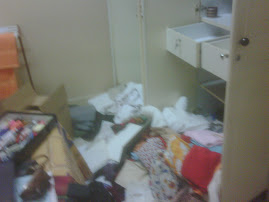
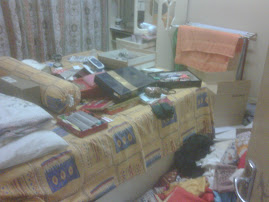










No comments:
Post a Comment